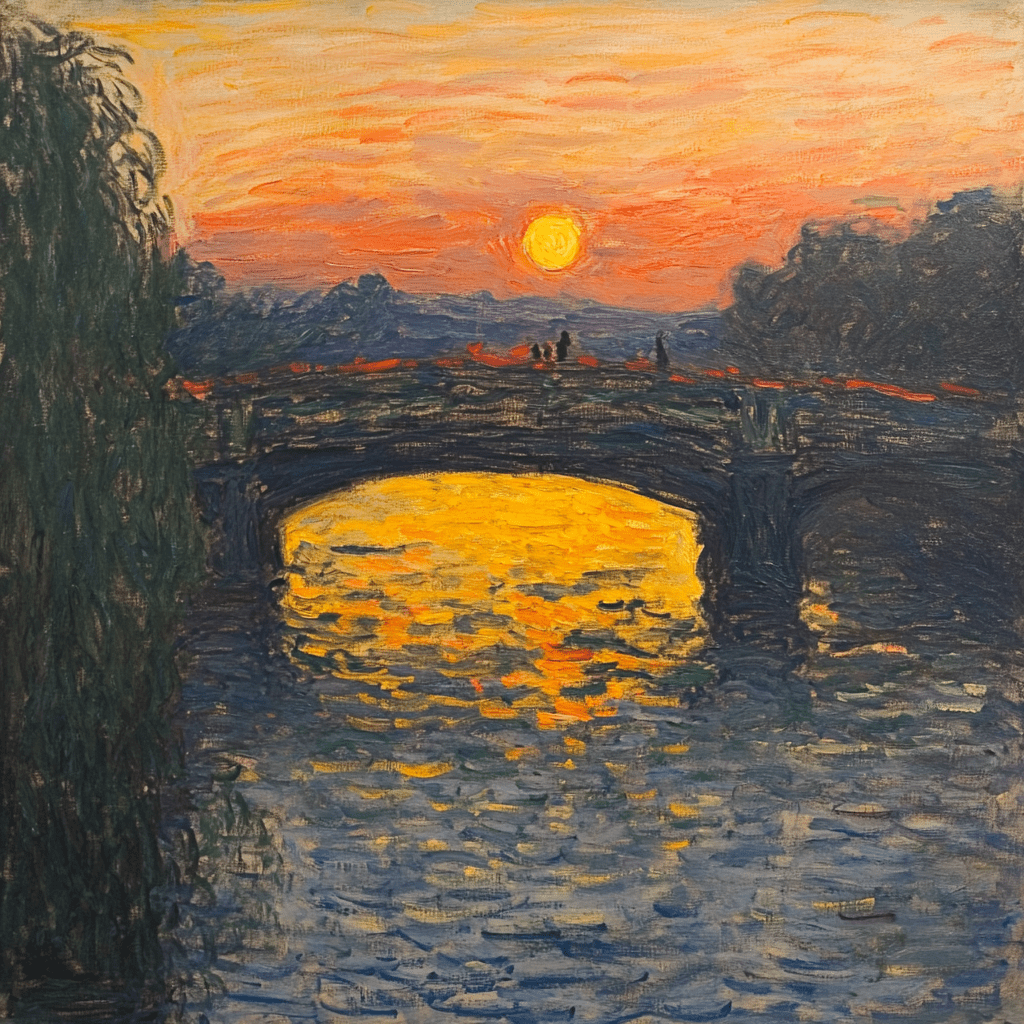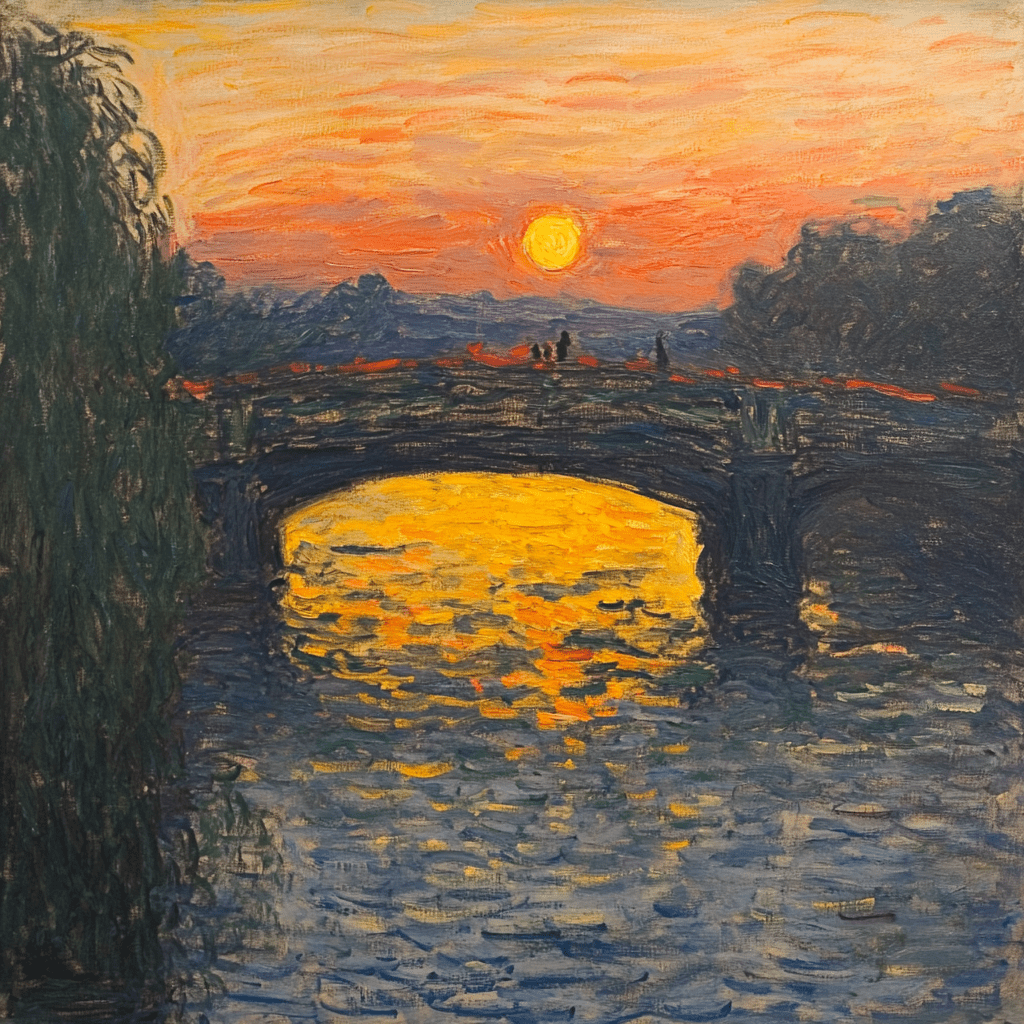The Origins of Impressionism: How the Impressionist Movement Began in 1874
Impressionism, one of the most influential movements in the history of art, began in 1874 and marked a significant departure from traditional styles. This art movement emerged as a response to the rigid conventions of the art establishment and the academic painting style prevalent at the time. The Impressionist movement revolutionized how art was perceived by emphasizing the depiction of light, color, and the transient effects of nature. This article delves into the origins of Impressionism, exploring the factors that led to its inception, the key artists who defined it, and its lasting impact on modern art.
What Led to the Start of the Impressionist Movement?
How did the early 1860s influence Impressionism?
The early 1860s played a crucial role in shaping the foundations of Impressionism. During this period, France was undergoing profound social and political changes, further catalyzed by the Franco-Prussian War. Artists began to seek new ways to express their perceptions of the world, moving away from the detailed, historical narratives promoted by the Académie des Beaux-Arts. Influenced by the Barbizon school, which emphasized painting landscapes directly from nature, artists like Claude Monet, Camille Pissarro, and Alfred Sisley began experimenting with capturing the effects of light and atmosphere in their work. This experimentation laid the groundwork for the impressionist style of painting, characterized by its focus on the immediate impression of a scene rather than a detailed, realistic portrayal.

What role did the Salon des Refusés play in the rise of Impressionism?
The Salon des Refusés, established by Napoleon III in 1863, was pivotal in the rise of Impressionism. This alternative exhibition was created to showcase works rejected by the official Salon, the annual exhibition held by the Académie des Beaux-Arts. The Salon des Refusés provided a platform for artists whose work did not conform to academic standards, including Édouard Manet, whose controversial painting "Déjeuner sur l'herbe" was displayed there. This event highlighted the growing discontent among artists with traditional art institutions and encouraged a group of artists to pursue an independent approach to art, ultimately leading to the formation of the Impressionist group.
How did the independent exhibition of 1874 come about?
The independent exhibition of 1874, known as the first Impressionist exhibition, was a landmark event in the art world. Frustrated by repeated rejections from the Salon, a group of artists led by Monet, Pissarro, and Pierre-Auguste Renoir decided to organize their own exhibition. This independent exhibition took place at the studio of the photographer Nadar and included works by artists who would become synonymous with Impressionism. The exhibition challenged the dominance of the academic art establishment and introduced the public to a new painting style that emphasized personal expression and the depiction of modern life.
Who Were the Key Artists of Impressionism?

What contributions did Claude Monet make to Impressionism?
Claude Monet, often regarded as the father of Impressionism, made significant contributions to the movement through his innovative use of color and light. Monet's dedication to painting en plein air, or outdoors, allowed him to capture the fleeting effects of light and atmosphere in his landscapes. His series of paintings, such as "Impression, Sunrise," which inadvertently gave the movement its name, showcased his ability to convey the transient effects of nature. Monet’s exploration of changing light conditions and his use of vibrant colors were instrumental in defining the Impressionist style and influenced countless other artists.
How did Edouard Manet influence his fellow Impressionists?
Édouard Manet, though not an Impressionist per se, was a pivotal figure in the movement's development. His bold approach to modern subjects and innovative techniques inspired many Impressionists. Manet's use of loose brushwork and his focus on contemporary life challenged traditional artistic norms and encouraged artists like Monet and Renoir to pursue their own unique styles. Despite his reluctance to exhibit with the Impressionist group, Manet played a crucial role in legitimizing their approach to art and bridging the gap between the academic art world and the emerging avant-garde.
What role did Berthe Morisot play in the Impressionist group?
Berthe Morisot was a prominent figure in the Impressionist group and one of the few women to achieve recognition in the male-dominated art world of the late nineteenth century. Her work was characterized by its delicate brushwork and exploration of domestic scenes and the lives of women. Morisot's ability to capture the subtleties of light and her innovative compositions contributed significantly to the Impressionist movement. Her participation in the group's exhibitions helped to elevate the status of women artists and broaden the scope of subjects deemed worthy of artistic exploration.
How Did Impressionist Techniques Differ from Traditional Art?

What is unique about Impressionist brushwork?
Impressionist brushwork is distinguished by its loose, spontaneous strokes, which contrast sharply with the precise, detailed techniques of academic painting. This style of painting sought to capture the essence of a scene rather than its exact details, allowing artists to convey movement and the play of light more effectively. The use of visible brushstrokes added texture and dynamism to the artwork, creating a sense of immediacy and intimacy. This approach to brushwork became a defining characteristic of Impressionism and set a precedent for future art movements, such as Post-Impressionism and Expressionism.
How did the practice of 'en plein air' painting shape Impressionist artworks?
The practice of painting en plein air was central to the Impressionist approach, enabling artists to capture the changing effects of light and atmosphere in real-time. This method allowed painters to observe and portray the transient effects of nature, including the shifting colors and shadows brought about by the sun's movement. En plein air painting encouraged artists to work quickly and adapt to the natural environment, resulting in vibrant, lively compositions. This technique provided a stark contrast to the studio-bound practices of academic artists and underscored the Impressionists' commitment to capturing the immediacy of the natural world.
How did Impressionists redefine the use of color and light?
Impressionists revolutionized the use of color and light in art by abandoning the muted palettes and chiaroscuro techniques favored by the academic tradition. Instead, they embraced pure, unmixed colors applied directly to the canvas, allowing optical mixing to occur in the viewer's eye. This approach created a shimmering effect that conveyed the vibrancy of natural light. Additionally, Impressionists often painted the same subject under different lighting conditions, as seen in Monet's series of haystacks and cathedrals, to explore the interplay of light and shadow. These innovations in color and light redefined artistic expression and paved the way for subsequent movements like Post-Impressionism and Fauvism.
Why Was the 1874 Exhibition Significant for Impressionism?
What was the reaction of the public and critics to the 1874 exhibition?
The reaction to the 1874 exhibition was mixed, with critics and the public divided in their opinions on the new style. While some appreciated the fresh approach to art, others were bewildered by the lack of detail and unconventional techniques. Critics often derided the artworks as unfinished or overly simplistic, with the term "Impressionism" initially used pejoratively. However, the exhibition garnered significant attention and sparked discussions about the future of art, challenging the dominance of traditional academic standards and paving the way for future exhibitions and acceptance of Impressionist art.
How did the exhibition impact the careers of artists like Renoir and Degas?
The 1874 exhibition had a profound impact on the careers of artists like Auguste Renoir and Edgar Degas. Despite initial skepticism, the exposure and controversy surrounding the exhibition helped to establish their reputations as leading figures in the Impressionist movement. Renoir's ability to capture the vibrancy and joy of modern life, combined with Degas's innovative compositions and exploration of movement, resonated with audiences and critics alike. The exhibition provided a platform for these artists to gain recognition and secure their place in the art world, ultimately influencing the trajectory of modern art.
What role did the Académie des Beaux-Arts play in the perception of Impressionist art?
The Académie des Beaux-Arts, as the leading art institution in France, played a significant role in shaping the perception of Impressionist art. As gatekeepers of the traditional art establishment, they initially resisted the innovations of the Impressionists, viewing their work as a threat to the established order. The Académie upheld the standards of academic painting, which emphasized historical and mythological subjects, detailed composition, and fine brushwork. However, the persistence of the Impressionist group and their continued exhibitions challenged the Académie's authority and gradually shifted public perception, leading to broader acceptance of diverse artistic styles and the eventual inclusion of Impressionism in the canon of fine arts.
How Did Impressionism Influence Future Art Movements?
What connections exist between Impressionism and Post-Impressionism?
The connections between Impressionism and Post-Impressionism are evident in the latter's expansion on the former's techniques and principles. While Impressionism focused on capturing the fleeting effects of light and color, Post-Impressionism sought to convey more emotion and symbolism. Artists like Paul Cézanne, Georges Seurat, and Vincent van Gogh built upon the Impressionist approach to art by experimenting with form, structure, and color theory. Seurat's pointillism, for example, was a direct evolution of Impressionist color techniques, using small dots of color to create a cohesive image. Post-Impressionism marked a shift towards more subjective interpretations of reality, setting the stage for the development of modern art movements such as Expressionism and Cubism.
How did artists like Paul Cézanne and Georges Seurat build on Impressionist techniques?
Paul Cézanne and Georges Seurat were instrumental in building on the techniques pioneered by the Impressionists. Cézanne focused on exploring geometric forms and the underlying structure of objects, which laid the groundwork for the development of Cubism. His approach to color and light, characterized by the use of small, repetitive brushstrokes, created a sense of depth and solidity in his compositions. Seurat, on the other hand, developed the technique of pointillism, applying tiny dots of pure color to create vibrant, harmonious images. His meticulous approach to color theory and composition was a logical extension of the Impressionist emphasis on light and color, furthering the evolution of modern art.
What lasting impacts did Impressionism have on modern art?
Impressionism's lasting impacts on modern art are evident in its influence on subsequent movements and its role in reshaping artistic conventions. By challenging the dominance of the art establishment and prioritizing personal expression and the depiction of contemporary life, Impressionism paved the way for a diverse range of artistic styles. The movement's innovations in color, light, and brushwork inspired artists to explore new techniques and subjects, leading to the development of Post-Impressionism, Fauvism, Expressionism, and beyond. Impressionism's emphasis on capturing the essence of a moment and its rejection of conventional norms encouraged artists to experiment and push the boundaries of traditional art, fundamentally altering the course of art history.
Enhance Your Space with Unique Modern Masterpieces
Are you inspired by the innovative mediums and conceptual depth highlighted in our exploration of contemporary art? You’re not alone! Today’s art enthusiasts are seeking cultural relevance and emotional connections in their artwork. However, finding pieces that resonate with modern themes and fit your unique style can be a challenge. That’s where we come in!
At Rossetti Art, we specialize in canvas prints, original paintings, and modern sculptures that celebrate the spirit of now. Each piece created by Chiara Rossetti brings a personal touch that connects deeply with current social narratives—just like the modern masterpieces discussed in the article. Don’t miss out on the chance to elevate your home decor with breathtaking artwork that speaks to your values and aesthetic. Explore our collection today and find your perfect piece! Act now, and transform your space into a gallery of inspiration!
FAQ
Q: What are the origins of Impressionism and how did it begin in 1874?
A: Impressionism began in 1874 as a reaction against the established art practices of the time, particularly the annual Salon organized by the Academy of Fine Arts. It was initiated by a group of artists who sought to capture the effects of light and color in a more spontaneous way, often painting out of doors rather than in studios.
Q: Who were some of the key painters involved in the Impressionist movement?
A: Key painters involved in the Impressionist movement included Claude Monet, Camille Pissarro, Edgar Degas, Alfred Sisley, Auguste Renoir, and Paul Cézanne. These artists, along with others, participated in the eight exhibitions that defined the movement.
Q: How did the Parisian art scene in the early 1860s influence Impressionism?
A: The Parisian art scene in the early 1860s was crucial to the development of Impressionism. The bustling city life, changing light, and vibrant culture provided inspiration and subject matter for Impressionist painters, who sought to depict everyday scenes with a fresh perspective.
Q: What role did art dealers like Paul Durand-Ruel play in the success of Impressionism?
A: Art dealers such as Paul Durand-Ruel played a significant role in the success of Impressionism by supporting and promoting the artists involved. Durand-Ruel organized exhibitions and helped to sell their works, which helped to establish Impressionism as a respected movement.
Q: How did Émile Zola and other contemporaries view Impressionism?
A: Émile Zola and other contemporaries often viewed Impressionism with mixed opinions. While some critics dismissed it as unfinished or crude, others, like Zola, appreciated its innovative approach and supported the artists' break from traditional methods.
Q: How did figures like Edouard Manet and Edgar Degas contribute to Impressionism?
A: Edouard Manet and Edgar Degas contributed to Impressionism by challenging traditional artistic conventions and exploring new techniques and subjects. Manet's bold use of color and Degas's focus on movement and modern life helped pave the way for Impressionist ideas.
Q: What was the significance of the eight exhibitions held by Impressionist artists?
A: The eight exhibitions held by Impressionist artists between 1874 and 1886 were significant because they provided a platform for the artists to showcase their work outside the official Salon. These exhibitions helped to establish Impressionism as a recognized and influential art movement.
Q: How did the works of Georges Seurat and Paul Signac relate to Impressionism?
A: Georges Seurat and Paul Signac were associated with a later phase of Impressionism known as Neo-Impressionism or Pointillism. Their technique of using small, distinct dots of color to form images was a development of the Impressionists' focus on light and color.
Q: How did Emperor Napoleon III influence the art scene during the Impressionist era?
A: Emperor Napoleon III influenced the art scene by supporting the establishment of the Salon des Refusés, an exhibition for works rejected by the official Salon. This provided a venue for avant-garde artists, including early Impressionists, to display their work to the public.




Leave a comment
This site is protected by hCaptcha and the hCaptcha Privacy Policy and Terms of Service apply.